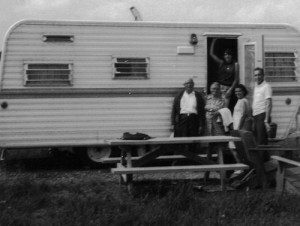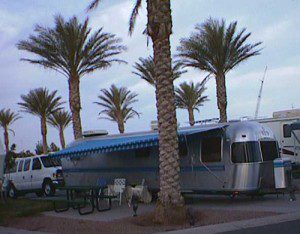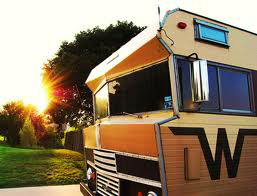Last week, I was heading out of town on one of the 400-series highways. It was a Friday afternoon. Traffic was slow. There were the usual volume holdups and the usual culprits – semis and commuter buses, but mostly cars towing boats, cars towing tent trailers, four-by-fours loaded to the gunwales with camping gear, and lots of RVs. One sported a bumper sticker that kind of summed up the moment.
“Don’t follow me,” it said. “I have no idea where I’m going.”

But isn’t that the essence of today? If I read the calendar correctly, today is the first full day of summer 2012. And that means lots of sunshine, trips to the cottage, leisurely games of golf, fishing off the dock, strolls on the beach, reading trashy novels, wiener roasts, summer camp, baseball with popcorn and beer, warming up the flat-screen for the London Olympics, occasional glimpses of aurora borealis, ghost stories by campfire and kids smelling like sunscreen, Off or Calamine lotion.
For a special crowd of summer enthusiasts, however – those who spend days packing up their vehicles with food, recreational gear and (I guess these days) the GPS – summer consists of a trip to anywhere, governed by nobody and bound for whatever the road throws at them. Whether it’s an Airstream, Winnebago, converted school bus, virtual touring bus or simple tent trailer, taking to the roads RV-style means hopping into a loaded vehicle with your family and/or friends in the seats adjacent. And like Nature’s perpetual RVer – the tortoise – RV travellers go as short or as long as they like, stop just about anywhere and have all the conveniences of home in tow.
By the way, any suggestion that inflated fuel prices might put a damper on RV activity is premature. The latest Canadian figures (from Go RVing Canada) say attendance figures at RV shows this year are up 25 to 45 per cent, sales are up 18 per cent. The industry – estimated to generate as much as $11 billion on the continent annually – offers RVers lists of associations they can join, a weekly rundown of trade shows, tips on towing, routes to the cheapest gas, emergency procedures, lay interpretations of the highway traffic act, suggestions for winter RVing, internet access to campground availability and templates for RV bloggers. And there are RV magazines for all interests A to Z – from Alaska by RV to Workamper News. In the view of industry analysts, the world is an RVer’s oyster.
The history of RVing is fairly obvious. In North America, at least, it all began with a guy named Wally Byam, a man trained as a lawyer but hankering for the open road. In the late 1920s he built a prototype trailer out of Masonite in his backyard. He published a how-to magazine offering construction kits.

In 1936, he acquired a struggling Hawley Bowlus trailer construction company and introduced the “Airstream Clipper,” the 24-foot, aluminium skinned, low wind resistant, fuel efficient house trailer. And in spite of the Depression, Byan put 400 Airstreams on the road that year. His Depression-era idea spawned an entire culture. Today, there are Airstream associations, websites, campgrounds and rallies.

Poor brother to Byam’s Airstream, was John. K. Hanson’s Winnebago, born in the county of the same name in Iowa. Curiously, in another period of economic downturn – the late 1950s – Hanson dreamed of making travel a realistic dream for average North Americans. In 2008, the company celebrated its 50th anniversary with the production of its 400,000th unit.
Unlike the perceived upscale Airstream, the Winnebago has migrated into popular culture too, with appearances in such films at “Escape to Witch Mountain,” “Spaceballs” and remember Clark Griswold’s goofy friend Eddie from Kansas parking his Winnie in the driveway in “Christmas Vacation”? Oh, and there’s the punk rock song “Winnebago Warriors” and a song by The Tubes.
“An American citizen, you are entitled to,” the band sings, “a herd of Winnebagos; we’re giving them away.”
I don’t know about getting them for free, but I do remember a seminal moment in an RV. The summer I turned 18 was 1967, Centennial year, the year the world came to Canada’s Expo ’67 in Montreal. Which was a grand thing, unless you were an average Canadian family in search of virtually no accommodation in Montreal to see the fair that summer.
Well, I have to hand it to those Expo folks. They thought of everything. We found lodging for my mom and dad, two grandparents, my sister and me, in a 19-foot-long Winnie Wagon (I think) on Montreal Island. From there we trekked daily to the Expo site. “Give us a Place to Stand” (the theme song at Expo’s Ontario pavilion) took on a whole new meaning for the Barris family that summer.
The Winnebago didn’t travel an inch, but it was our ticket to the world that summer. And for that, I owe RV king John K. Hanson (if not my patient grandparents) a hearty, patriotic thanks.